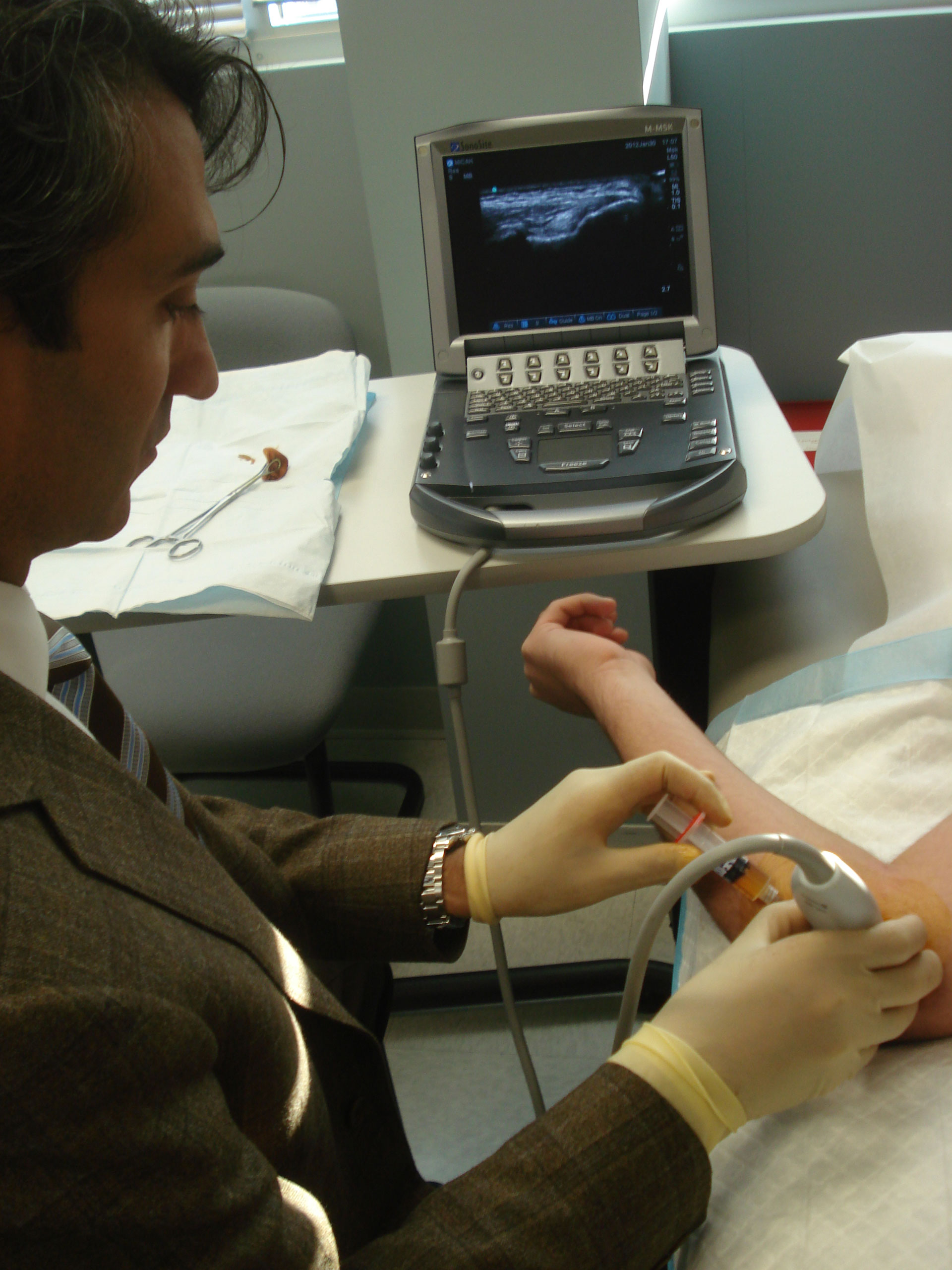In 2009 a Yankee outfielder made a routine hard throw and felt a pop in his elbow. I immediately examined him and his UCL was tender. An MRI scan revealed his UCL was partially torn. This player wanted an alternative to surgery which is associated with a long recovery period. Understanding his concerns, I recommended PRP injections with ultrasound guidance.
PRP stands for platelet-rich plasma, and contains high concentrations of platelets and growth factors that have been implicated in accelerating the healing process. PRP is obtained from a patient by drawing a small amount of blood (approximately 10-12 cc) and placing it in a centrifuge for the PRP to be separated from the other components of the blood. Because UCL injuries do not always heal reliably, PRP is an exciting alternative to surgery that uses ultrasound to precisely localize the injection to the exact area of injury.
I have been administering PRP injections to the UCL for over 10 years. To determine if PRP injections really help heal UCL tears, we conducted a study and published it in the American Journal of Orthopedics in 2016. We specifically examined PRP treatment for partial UCL tears.
Our study was conducted with 44 baseball players (6 professional, 14 collegiate, 24 high school) who were treated with PRP. Of the 44 patients, 15 (34%) had an excellent outcome, 17 had a good outcome, 2 had a fair outcome, and 10 had a poor outcome.
After injection, 4 (67%) of the 6 professional players returned to professional play. The average time from injection to return to throwing was 5 weeks. The average time to return to competition was 12 weeks. Importantly, there were no injection-related complications ,and for those patients who did not heal, surgery remained a highly viable option.



